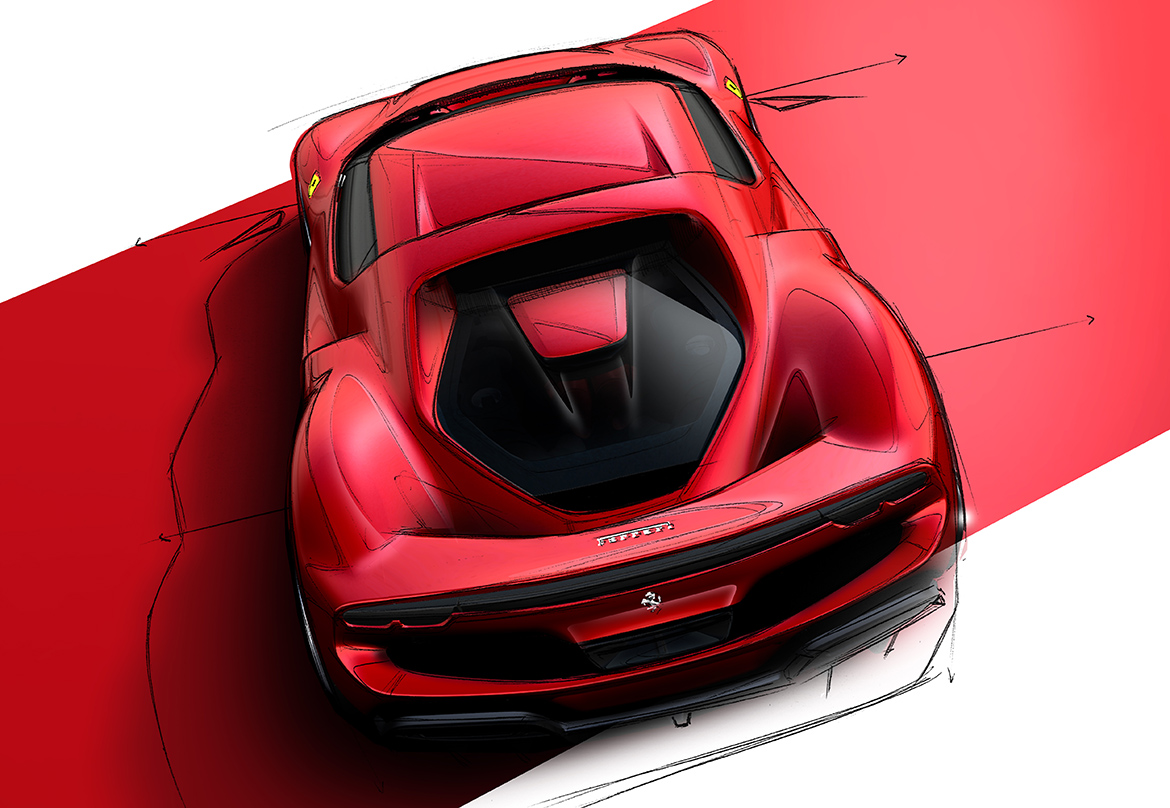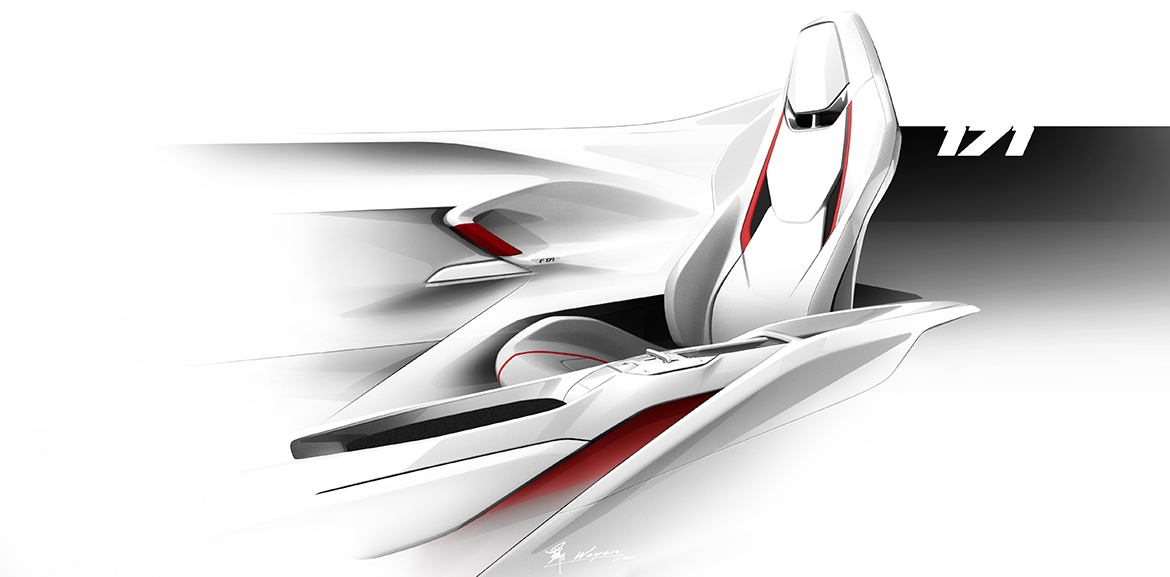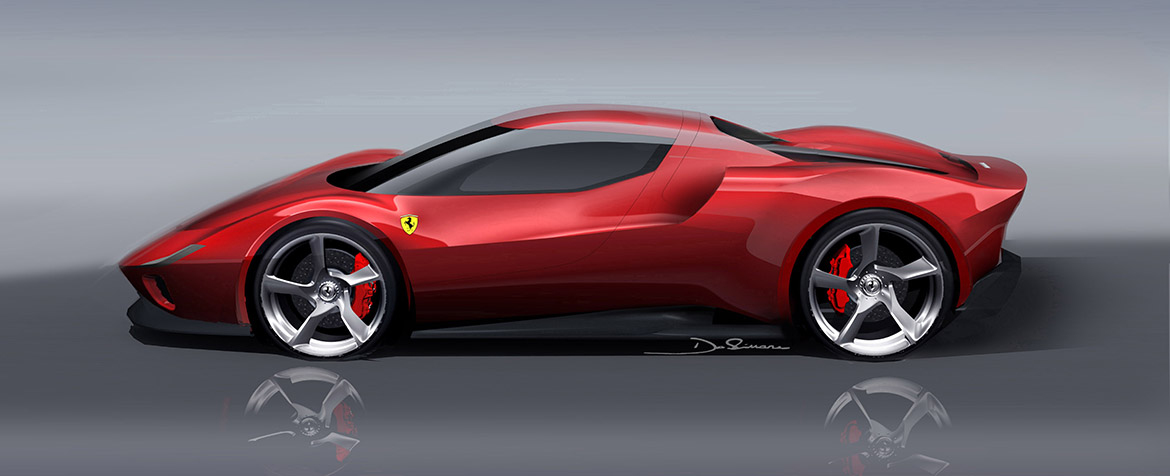A V6 petrol engine, hybrid architecture and its own place in the range line-up without having to replace an existing model. If today the criteria of all manufacturers are being redefined by the need to curb emissions, the 296 GTB is a veritable revolution for Ferrari: this is why it is particularly interesting to discover that past design principles have remained unchanged.
“One example is the short wheelbase that we opted for right from the start so as to maximise fun to drive”, says Flavio Manzoni, who has been running the Ferrari Style Centre since 2010. “So our first step was to review overall proportions. This stage developed in a fairly straightforward manner and soon led to satisfactory results”. At the heart of the layout is the bold vertical rear window, which not only redefines the formal principles of the rear, but also offers encouragement to imagine a different layout for the other volumes.
The result therefore emerges as an organic, ‘holistic’ unit whose technical complexity is brought under submission by the tools of aesthetic cohesion. “At the rear, not surprisingly, there is a wide range of aerodynamic solutions, of which the retractable spoiler and the ‘high’ central exhausts are only the most visible, but all of which are packed into a comprehensive transom”.
The area around the powertrain is also the perfect place for popping in historical references, from the transparent lid with its painted longitudinal panel, evocative of the 1975 308, to the very structure of the “strong, signature wheel arches, with their extruded appearance”, a direct citation of the 1963 250 Le Mans. As has happened in other projects directed by Manzoni, the re-reading of the past blends with the most advanced of formal approaches, until it merges into a product that can also be interpreted from a uniquely contemporary perspective.
And the front? “It was born out of the multiple iterations required to pinpoint the exact locations of the air intakes, including those integrated in the lighting to ventilate the brakes, and it works because it’s smooth, elegant and frill-free. The headlights, which we gave a lot of attention to, lend the car an assured expression”.
Listening to Manzoni, it’s easy to believe that the 296 GTB was primarily an exercise in wrestling with complications. But he surprises us one more time with a more profound consideration: “It is often said that less is more. Well, in my opinion this should not be understood in the sense of pursuing mindless minimalism. If anything, the many problems of a project have to be managed with a fair dose of artistic competence. After all, as the great sculptor Constantin Brâncuși said: ‘Simplicity is complexity resolved’.
(Full article in A&D no. 250)
















